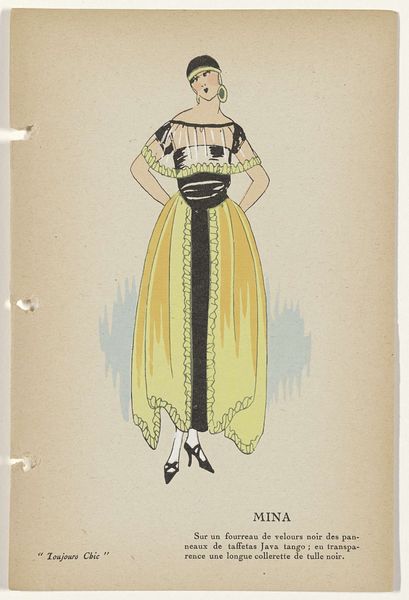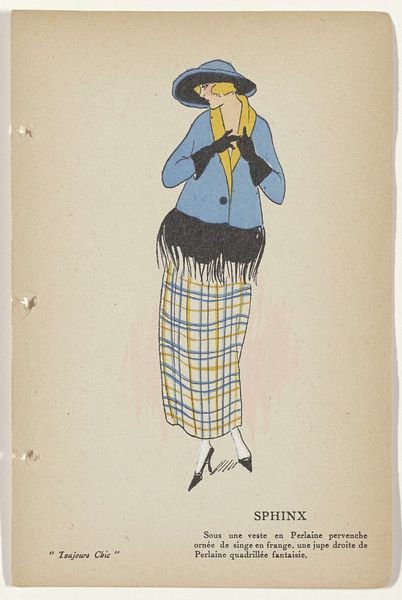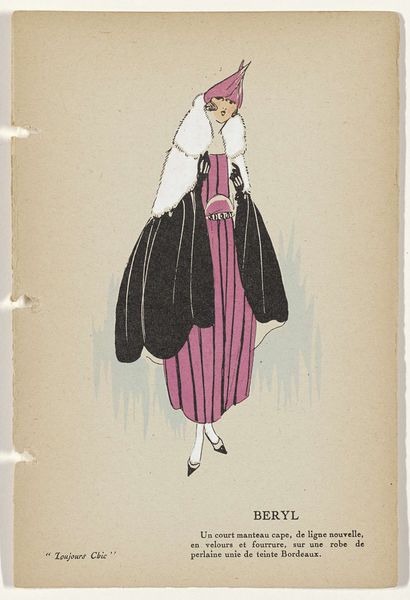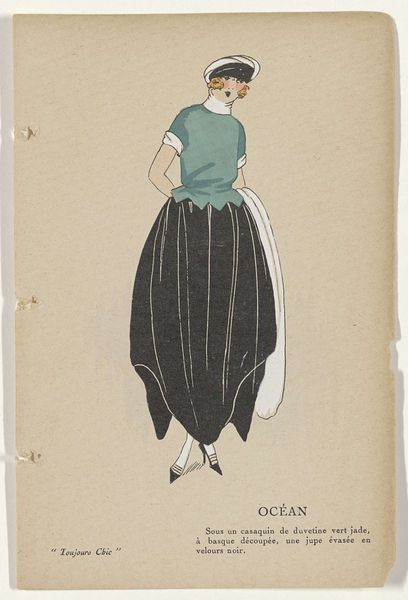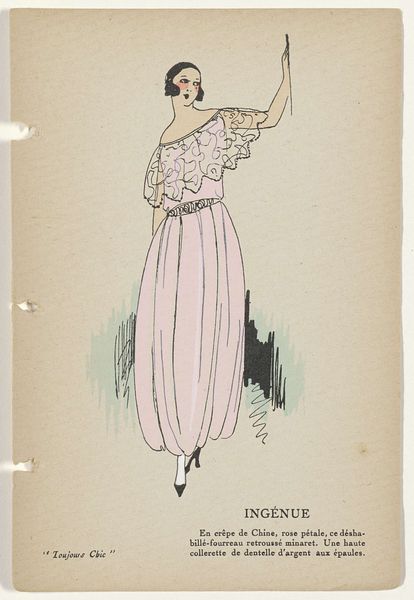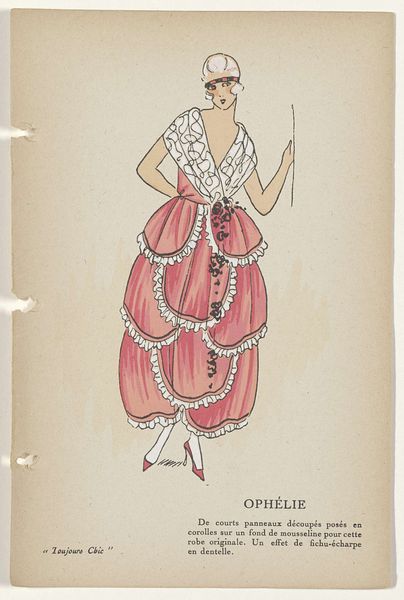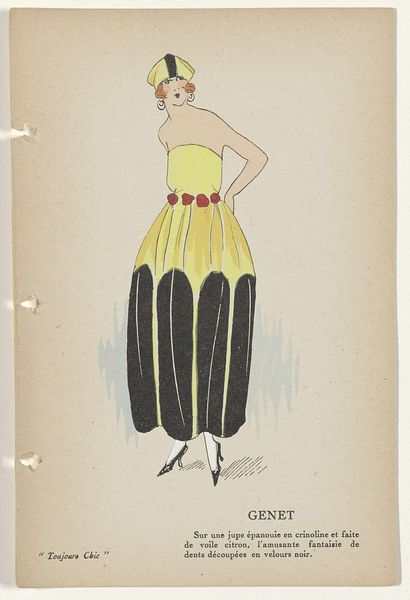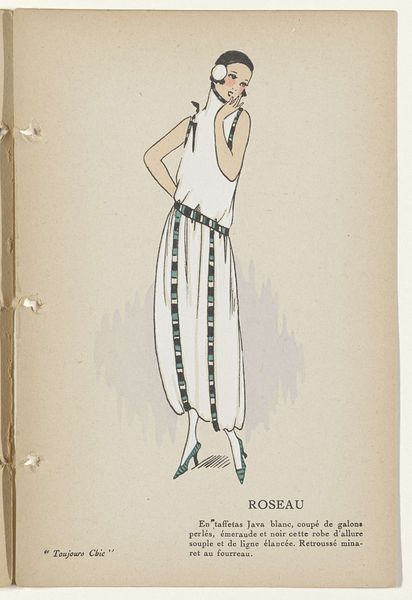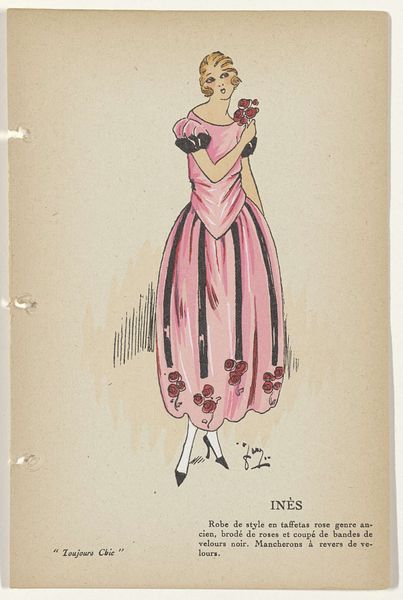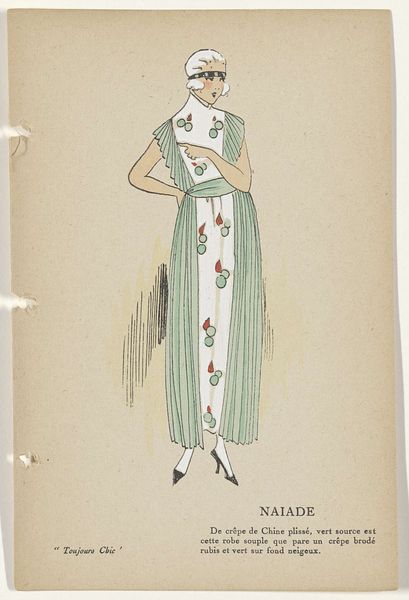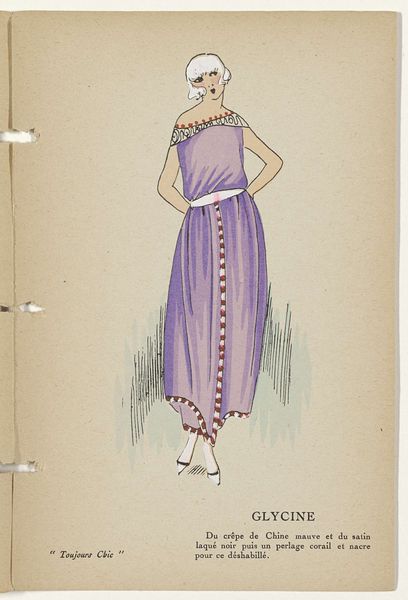
Dimensions: height 180 mm, width 120 mm
Copyright: Rijks Museum: Open Domain
Curator: Here in the Rijksmuseum we have a fashion drawing titled "Toujours Chic Les Deshabilles, Hiver 1921-1922: Rayon-d'or" by G-P. Joumard, a wonderful piece of Art Nouveau created with pen on paper. Editor: It’s striking how fresh this feels for something over a century old. That radiant yellow dress patterned with polka dots has such a playful energy. Curator: Absolutely. Joumard was capturing the shifting silhouettes and color palettes that defined the post-war "garçonne" look, with its streamlined forms. What I find fascinating is the interplay of "chic" with the "deshabille"—the idea of stylish undress. The collection’s name in itself suggests so much about the changing social roles and perceptions of women during the period. Editor: Yes, and look how simply but powerfully she is rendered, as though this newly liberated woman need be sketched only lightly to indicate the massive cultural shift that she is a part of. Also, the phrase "rayon d'or" seems important. The 'golden ray' seems less about describing the fabric than hinting at something transformative. Was this figure symbolic? Curator: Undoubtedly. Advertising like this played a critical role in shaping consumer desire and disseminating new ideals of femininity. The flapper wasn't just wearing clothes, she was buying into a whole new lifestyle that broke from Victorian norms, but that said, it was a consumer-driven vision. Editor: So, it simultaneously liberates and commodifies. The simple lines contrast interestingly with what's communicated in the written description which states the dress has "a trimming of black jet", which suggests elegance or perhaps even extravagance, hinting at class tensions embedded within the fashion itself. Curator: Precisely, there's a deliberate ambiguity that likely appealed to a broad range of potential consumers. The art deco and streamlining were attractive because of its sleekness but were meant to convey something attainable by a wider audience than just the aristocratic elite, even while emulating their sense of taste. Editor: Looking at it now, I see it as more than just a drawing; it's a document of a society redefining its values, a society still deeply unequal even as new horizons were suggested for many through commercialism. Curator: It prompts one to consider how marketing, and its imagery, intersects with both aspirations for progress, and those aspects of the social fabric resistant to progress. Editor: A snapshot in time, meticulously penned, radiating light and promise, and fraught with historical complexity.
Comments
No comments
Be the first to comment and join the conversation on the ultimate creative platform.
